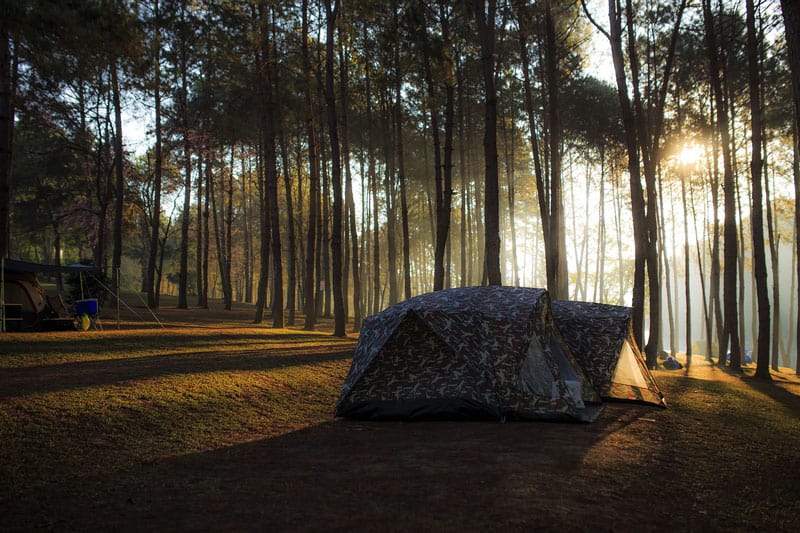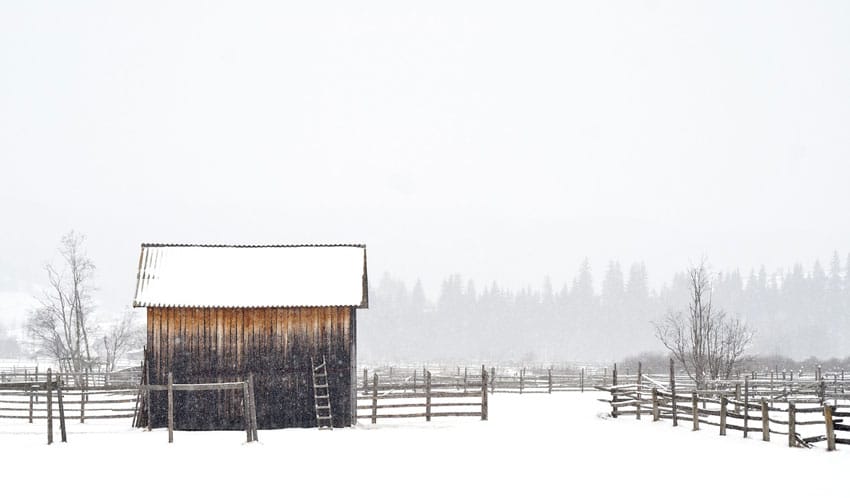Of the many items you need to survive in the wilderness, a shelter is perhaps the most important. Often we think of a short-term or temporary shelter. However, for lovers of camping, a long-term or permanent shelter could be a good move. This is the case if you have a regular camping site and you love bushcrafting. So how do you build a shelter in the wilderness?
The good news is that you can. Even more beautiful is the fact that you can do it using materials you obtain from the wilderness. Our aim here is to show you easy to follow step by step guide on how you can build a permanent shelter at the campsite.
Things You Will Need
In most cases, you will use stuff you obtain from the bush such as logs, tree branches, plant leaves, and snow among others. However, you will also need certain man made items. You must pack these items before you embark on the journey. Here are the items to bring along:
- High-quality cordage like paracord
- Lighter
- Tarp
- Shovel
- Multi-tool
- Hatchet
- Survival knife
- A pair of heavy-duty gloves
- Bivy Sack
However, you must be careful to keep the weight of your survival pack light. You should also remember to test the tools before you go to the field. The last thing you need is a failure of an item at the critical moment. This would scatter and minimize your levels of success.
How to Build a shelter
Step 1: Choose an Appropriate Camping Site

You will be building a permanent survival shelter, right? That means you will need a site that you can visit regularly for a long time to come. The camping site must be able to provide you peace of mind, safety, and security. It should also be sheltered from elements.
Avoid muddy and swampy places. Bumpy ground too is a no-go zone. Yet it is a good idea to put your long-term shelter close to a water source. Do not build it right next to the water source. Water level could rise when you least expect it and flood your shelter in seconds.
Be careful not to site the shelter directly below a steep cliff. It could be in the course of a surface runoff. For the same reason, you cannot site it on a ground lower than the nearby ground. Where you have no option but to set it on a lower ground, dig trenches around the shelter to act as dikes against surface runoff.
You must also ditch building your shelter on a higher ground. Such a site would make your shelter vulnerable to strong winds. A prime location should be a flat ground surrounded by proximity terrains. The best thing is that you will be able to set a bonfire without a problem.
Step 2: Consider Your Specific Needs and Requirements
Although this sounds like an advice, it is also an important step to the successful building of a long-term shelter in the wilderness. Here, you will have to decide the specific characteristics of the shelter you are planning to build.
You should ask yourself many questions. How many people will be using the shelter? What are the weather and climatic conditions of the area where the camp is? What is the duration the shelter will serve you since the term permanent is blanket? Will you set fire indoors or outdoors in the shelter?
The answer to these questions should guide you on the size and the structure of the shelter you will build. Since it will be a permanent shelter in the wilderness, you need to be thorough on your needs. Otherwise, dehydration and hypothermia are real risks.
Also read: The Importance of Shelter in Survival
Step 3: Choose the Design for Your Shelter
The designs of permanent campsite shelter are as varied as housing designs we see in the modern world. Each of these designs has its own unique qualities depending on various situations. You need to understand each of these designs to help you choose the ideal design for your needs. Generally, designs that take considerable amount time and effort to build are better. Here is a list of the most popular models:
Lean-To Permanent Shelter
The lean-to shelter is perhaps the simplest and easiest to build. It is also the roomiest. All you will need are tall trees and branches. Just look for two tall trees that are about 8 feet apart. Collect some strong and somewhat straight branches. Use cordage to tie a sturdy branch across the two trees forming an inverted U-frame.
Arrange additional branches along the crossing branch each 1 foot from the other. Tie each of them using cordage. You can them cover the gaps between the branches with additional branches and tie with cordage. Alternatively, you can cover the gaps with bushes, debris and any other thing at your disposal. A tarp could also act as a cover. It is as simple as that.
Wicki-Up Shelter
This permanent shelter uses loads of tree branches and limbs to form a frame. You can then cover the frame with all manner of stuff including leaves, bushes, and vegetations. To construct it, gather tens of somewhat straight branches. Tie them with a paracord to make a funnel-shaped frame.
Set the funnel in the ground top-down. Cover it will all manner of plant vegetation until it is warm inside and watertight. The heavy vegetation will be able to shelter you from the blazing sun. The shape of the roof will also encourage the sliding of water drops. Slide in your sleeping bag and you have a permanent shelter to sojourn in.
Snow Cave Shelter

If you love camping, even winter season cannot stop you. The good news is that you can make a snow cave shelter. It will cover you from the freezing cold air and freezing wind. To build a dependable shelter, pick a place invested with a deep bank of snow.
Use your shovel to dig a sizable tunnel into its side. Choose the side that is shielded from winds. The next step is to dig inside to create enough space to allow you slide into your sleeping bag. Ensure the roof of the resting compartment you have created is far from the snow. Punch a few holes into the walls of the shelter to provide ventilation.
Wrapping It Up
The process of learning how to build a permanent shelter in the wilderness is as easy as that. You do not have to carry machines and raw materials into the wilderness to create a long-term place to rest your back in the wilderness. You may not get it right the first time. However, you can depend on the information we have provided you with to develop the skills. The surety is that you now know how to survive in the wilderness if you find yourself in a compromising situation.
You May Also Like to Read
15 Tips for Camping in the Rain
Backyard Chickens – Long Term Survival Necessity

